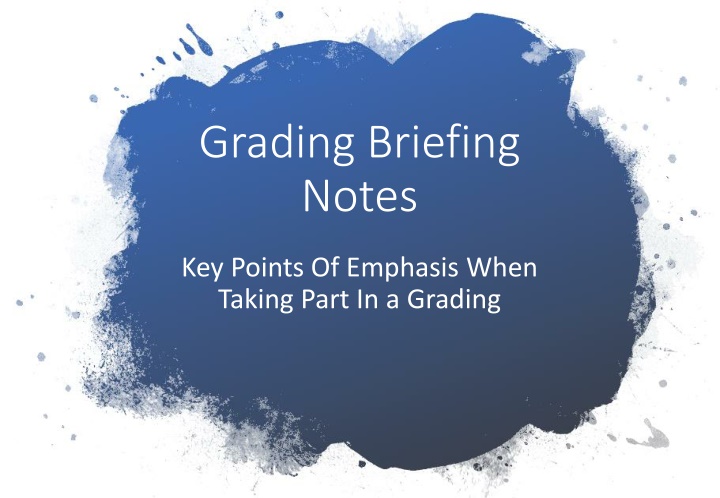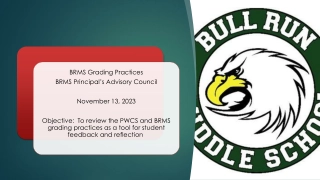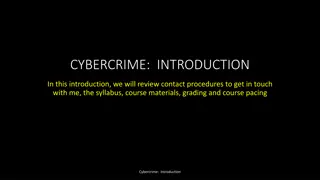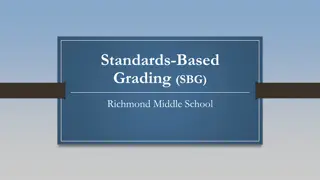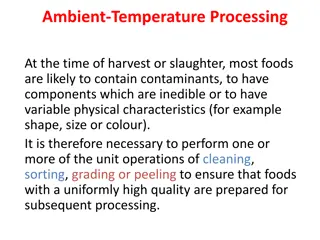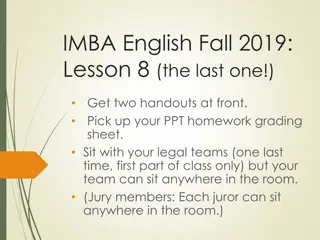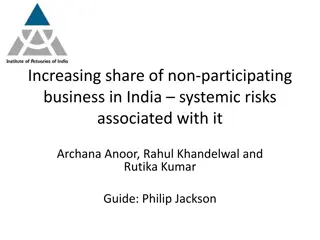Key Points of a Grading: Emphasis when Participating in Kendo
Explore the key aspects to focus on during a Kendo grading session. From correct attire to spiritual integration, learn the priorities and components essential for success in the evaluation process.
Download Presentation

Please find below an Image/Link to download the presentation.
The content on the website is provided AS IS for your information and personal use only. It may not be sold, licensed, or shared on other websites without obtaining consent from the author.If you encounter any issues during the download, it is possible that the publisher has removed the file from their server.
You are allowed to download the files provided on this website for personal or commercial use, subject to the condition that they are used lawfully. All files are the property of their respective owners.
The content on the website is provided AS IS for your information and personal use only. It may not be sold, licensed, or shared on other websites without obtaining consent from the author.
E N D
Presentation Transcript
Grading Briefing Notes Key Points Of Emphasis When Taking Part In a Grading
Grading priorities Indicator Key Aspects Correct Attire/Appearance Chakuso Correct Posture/Poise Shisei Correct Manners/Courtesy Reiho/Reigi Projection of readiness. Kigamae (Mental), Migamae (Physical) Ashi No Riai - Theory of footwork. Ashi Sabaki, Seme Ashi (Attack), Chikara Ashi (Power) Chamae Grading Checklist Toho Theory of sword use. Hasuji, Sae, Datotsu Theory of spiritual integration Kiai Theory of movement/performance Taiho Integration of technical, physical and strategic aspects Manifestation of Ki Ken Tai No Ichi Riai Readiness to continue. Physical/Mental Zanshin Development of full integration KI KEN TAI ICHI and SHIN KI RYOKU NO ICHI
BKA Grading Components: BKA Grading Components: Please note these are indicators for both the Kata and the grading Kata and Jitsugi Jitsugi elements of Chakuso/Rei Comportment and presentation. Putting on, wearing and using the uniform and equipment of Kendo correctly. Considered an indicator of a serious attitude to the study of kendo philosophy and form. Ashi Waza Use of the feet to attack, evade or control the action of the shinsa while maintaining readiness and good form (Kamae). Ki Ken Tai An essential component of Yuko Datotsu/Ippon. The harmonious use of one's spirit sword and body in attacking/striking the opponent. Kiai A vocalization of spirit. Also, a state of harmonious mental focus between one's own and the opponent's actions and intentions. Shin Ki Ryoku An application of ki ken tai in an effective waza (Shikake/Oji) that includes Yuko Datotsu/Ippon and is Manifested as an instantaneous response to a developed/perceived opportunity. Datotsu Striking accurately/correctly (with hasuji) in good form with a full spirit at the appropriate moment (After Seme or Kikai) and incorporating effective Zanshin. Kizeme - To use one's spiritual energy to abide with neutralise and control the opponent. Harmonising with and projecting one's mental, spiritual and physical energetic threat to unsettle another (4 sicknesses). Seme To take the initiative and unbalance the opponent: Mentally and Physically (Kiryoku, Kensen, Datotsu). Kikai Developing opportunities and/or taking chances with full spirit and vigour (Kihaku). Zanshin Maintaining physical form, mental awareness and spiritual power (Mi-Gamae, Ki- Gamae, Kiryoku). Essential to complete actions and follow up strikes. Kamae Standing so that one projects an aura of complete readiness to act. Kigamae, Kokoro- Gamae, Migamae (Spiritual, mental and physical readiness).
Key Points of Observation For BKA Dan Grading Panelists Key Points of Observation For BKA Dan Grading Panelists SHODAN NIDAN SANDAN YONDAN GODAN Chakuso/Reiho Chakuso/Reiho Chakuso/Reiho Style, dignity, pride Refined dignity of demeanor Physical kamae (Upright, Balanced) Energy and sharpness apparent Discerns the moment to strike and acts Effectively foresees and reacts Effectively foresees and forestalls Loud kiai Power in the strikes Use of seme in all attacks Harmonious mi- gamae and ki- gamae Kizeme evident Grip of the shinai (Flexible) Shikake waza and oji-waza evident Using the maai to gain advantage Takes pride in performance and technique Position of the shinai (Tanden) Striking with reason (theory of the sword) Kiai strong, does not tail off Strikes are effective Delivers reasoned strikes Ashi Sabaki (Basic) Understanding of when to strike Kamae is impressive Effective seme Capability to instruct theory and practically Maai (Correct) Capacity to be an instructor Use of maai in attack and defence Highly charged spirit Strikes (Large, correct, basic) Strength, focus and power evident Harmonious mi- gamae, ki-gamae Understanding of mental and physical zanshin Basic Zanshin Basic Zanshin Fully integrated and effective zanshin Abridged excerpt from In The Pursuit of Kendo J.Humm NB Highly recommended Well developed mental and physical zanshin
Chakugan-Ten (Fundamental Focus Points) Kishin Readiness. The mental and physical preparation required to perform well. A build-up of concentration, will, and determination in unison with the partner before starting. Kyojaku Correctly focussed use of power, the amount of power used for each movement, element and Kamae. Kankyu The speed and agility used in each movement and Kamae. Shinshuku Stretching out and drawing in the body The way the body is able to draw in and become relaxed/fluid to concentrate energy and power before whipping out to complete an attack sharply like sparks flying on impact . Kokyu Breathing, correct exhalation and inhalation throughout the performance. Chakugan Directing one s attention (Kanken no Metsuke). Seeing the outward manifestation and the internal motives behind the movements made in preparation. Kiai An aspect of both Ki Ken Tai and Shin Ki Ryoku. Mental and physical power is concentrated and released harmoniously at the appropriate moment. Hyoshi Timing, rhythm, tempo the correct combination of pace and power throughout the performance Kime The focal point. Concentration of the body s energy at the moment of opportunity (Datotsu No Koki). Antei Stability, steadiness, balance. Adjusting to changes effortlessly, smoothly and effectively. Elegant use of the body in kamae and transitions. Keitai no Hoji Using each technique and movement in its proper place. Maintaining good form and applying the correct movements (Ashi Sabaki, Kamae, Waza). Zanshin Being in high spirits and fully aware of all possibilities throughout the Jitsugi and Kata. Being fully prepared to press an advantage or continue an action. In-Yo IN: passive, negative, declining, or consuming and corresponds to subterfuge or strategy. YO: bright, active, light, positive, growing and corresponds to the overt or external aspect. IN may be related to water and earth, while YO is aligned with fire and air. All forces in nature can be seen as existing in these two states. The two produce the constant movement/force of the universe. As the universe is relative and interdependent, the determination of which thing is IN or YO depends on its complementary opposite. The Gogyo are the 5 elements: Metal, Earth, Water, Wood and Fire. In-Yo- Go-Gyo considers how all these concepts interact. They can be seen as both complimentary In, and confrontational Yo, (Water can overcome fire but gives rise to wood. Metal overcomes Wood but can be changed by fire etc.). Active and passive (attacking and defending). Kobo Ichi harmonising the opposing aspects of one s nature and physicality. Attack and defence as one.
The Keys to Grading Success The Keys to Grading Success Older persons should be aiming to perform dynamic, powerful Kendo. Younger people should be aiming to perform a calmer more mature style of Kendo . then shifts to a noble presence in style. Controlled use of the voice and Chamae maintains pressure on the opponent and suppresses their ability to act. When assessing Shinsa the first consideration is Kihin and Chamae. When a person s Kendo doesn t look right or they have a flawed Chamae they don t look strong. If a person wears their Keikogi and Bogu correctly and their stance is elegant their Chamae is impressive drawing attention to their kendo. Chamae is an outward manifestation of preparedness. This applies to both the body and the mind. When assessing Shinsa always consider whether the candidates Chamae shows both of these aspects. Kisei (Spiritual power) and Kihin (elegance and pride in appearance) are manifestations of Kigurai and are essential components of a successful grading. Both of these should appear in the candidates Chamae. Consider the projection of the voice(Hassei) and the projection of vigour and passion (Kisei). The voice should be able to fill the entire hall. Without such an impressive Hassei as an indicator of power and determination it is difficult to justify passing a candidate. Correct Te-no-Uchi and Ashi Sabaki are important in maintaining the correct Chamae. In fact, all the elements of the Chamae should have such efficiency that nothing is done without it being necessary. It is impossible to obtain such skill in Chamae without considerable effort and attention to detail. After Sonkyo candidates should stand and start to apply seme and tactics. When grading it is essential at this stage they show enough of the essence of their kendo to impress panellists with their knowledge of the fundamentals and their power and vigour. Their Chamae shows their understanding of and attitudes towards Kendo. The waza demonstrated during shinsa should be accurate and sharp. Only correct Te-no-uchi and wrist movement creates this sharpness (Sai). Kiai should be done from Yusei (full voice) to Musei (no voice). One first demonstrates power and vigour
Advice for the Kiri Kaeshi: 1. 2. 3. The panel will be looking for a good response to any training or advice they have given. Correct Reishiki/ Reiho is an essential element for all grades For candidates to be successful at Ikkyu and Shodan the panel will expect to see large and accurate strikes that are delivered in good form. The three Shomen strikes should be done straight, with Seme (being careful not to cross the feet) and with stamping footwork. The remaining strikes are done with sliding footwork and with the cuts at 45 degrees into the target. All the cuts should be delivered at the Datotsu bu of the Shinai and into the Daotsu bui of the bogu. One must aim not for the shinai but for the Men Buton The Sayumen strikes are received by pulling in the shinai giving a vertical target for the strike to land on. Taiattari is not a required element of Kirikaeshi at this level For Nidan the panel will expect a more fluid and rhythmic movement throughout the performance, but the accuracy of the strikes must be maintained. There should also be loud rich and continuous Kiai. At this level there will be more refined Ki Ken Tai and Seme will be more evident. The Sayumen strikes will once again be received by pulling in the shinai giving a vertical target for the strike to land on. Taiattari is still not a required element of Kirikaeshi but at this level if applied must not break the flow of the performance For Sandan a large powerful cutting action will be evident. All strikes will be delivered accurately, and Ki- ken-tai will be very well developed both for the stamping and sliding footwork elements. Seme will be well developed and effective at breaking the opponent s centre. The Kiai should be loud, confident and continuous The Sayumen strikes will be received by striking down whilst keeping the left hand on the centre line. Each strike is met crisply with a feeling of Uchiotoshi. Taiattari is not essential but is encouraged. If employed, it must be effective and must not inhibit the continuity of the performance. 4. 5. 6. 7.
Advice for the Shinsa Geiko: The panel will be looking for a good response to any training or advice they have given 1. 2. Rule of Thumb: First show your form (SHISEI), Second show your control (SEIGEN/SEME), third show your spiritual power (KI/KIAI). Fourth show your technique (SEME/WAZA). 3. The panel will expect a competent and confident presentation of Reiho at the start and end of the Shinsa Geiko for all grades. Sonkyo must be performed with a straight back and controlled movement. If this is not possible due to injury the panel must be informed and standing rei performed competently and confidently instead. This is particularly important for Yondan and above 4. Generally, grades up to Godan have roughly 60 seconds to show their suitability for the grade. Rokudan and Nanadan have 90 seconds whilst for Hachidan 120 seconds is allowed 5. Up to Sandan Ken no Metsuke will be sufficient (Observing and responding to the opponent s state/actions - Reactive). For Yondan and above Kan Ken No Metsuke (Perceiving and interpreting the opponent s intent - Anticipative) will be necessary for success 6. At all levels Shodachi (the first strike) is a critical moment in the Shinsa Geiko 7. Experienced panel members can often make their decision in the first 20 seconds of the Shinsa Geiko based on how candidates present themselves in the Reiho and the lead up to the Shodachi. The first 20 seconds of the Shinsa should therefore be used to show your quality. This means present perfect Shisei and Reiho, show a good Chamae, show that you can control the opponent, take opportunities and deliver powerful Kiai at the moment when it can best affect the opponent 8. Only once victory has been assured (Seme Katsu through the application of the Sansappo) should one use Seme Komu (The approach) to initiate a strike 9. When one senses that Seme has been successful a strike or counter should be delivered with Seme kiru 10. All strikes should be delivered sharply and finished off well with evidence of grade appropriate levels of Ki ken Tai No Ichi and Zanshin (Mi Gamae and Ki Gamae) 11. Candidates at any level who attack wildly and without the use of Kiai, Seme and Metsuke or who cannot strike well (Grade appropriate quality) will fail
Advice for the Kata Geiko: The panel will be looking for a good response to any training or advice they have given 1. 2. Riai - Advancement in kendo is dependent on development of both practical and theoretical aspects of the art. That is why Kata is a required element at all grades so be sure to understand the theory of your art and perform all the theoretical elements of the techniques to be demonstrated 3. Te No Uchi No Sai - All strikes and counter strikes should be delivered and finished off well (Grade appropriate quality) 4. Ashi Sabaki - The correct footwork (type and quality) should be utilised throughout the kata 5. Maai - Attention must be paid to maintaining the correct distance for strikes and counters 6. Zanshin mental and physical awareness must be evident throughout the performance 7. For Ikkyu, Ipponme to Sambonme will be performed competently and confidently 8. For Shodan, Ipponme to Gohonme will be performed competently and confidently 9. For Nidan, Ipponme to Nanahonme will be performed competently and confidently 10. For Sandan and above, all 10 Kata will be performed competently and confidently 11. Candidates at any level who make significant errors within the kata (Including the Reishiki at the start and end) and do not ask to repeat the element by raising their left hand will most likely fail, as will those candidates who do not perform the required Kata with appropriate competence and confidence
